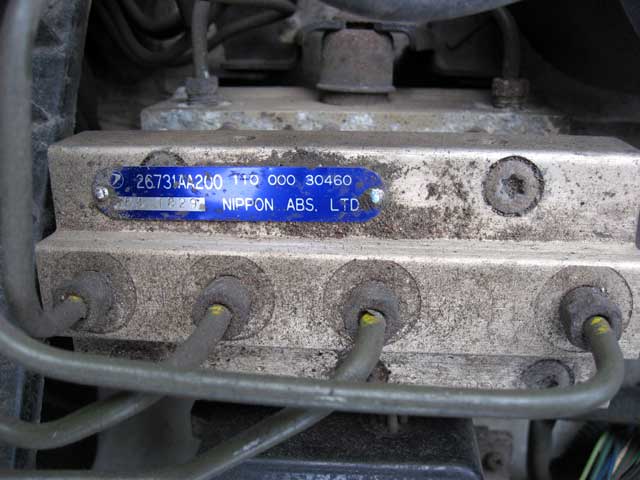Antilock Brake System for Early Subarus:
Chambers And Connections:
In the right side of the valve is a pressure equalization chamber. The head of the plunger piston divides this chamber in half (zones A and B). If pressures in both halves of the chamber are equal, spring tension keeps the plunger piston in the home position, all the way to the right.

The right half of the chamber is connected to the master cylinder (port 2) and to the pump in the HCU (port 6). The left half of the pressure chamber is connected to the right rear hydraulic circuit (port 5).
During conventional braking, the master cylinder pressurizes both sides of this chamber. However, if pressure in the left half of the chamber is lower than pressure in the right half, the plunger piston is allowed to move to the left.
The other side of the mechanical valve contains a passage (zone E). One end of this passage is connected to the master cylinder (port 1); the other side is connected to the pump (port 3). The passage is also connected through a pressure port to a second pressure chamber (zone D). This chamber is connected to the left rear hydraulic brake circuit (port 4). Also in this chamber is a second piston, piston 2. Piston 2 is connected to the plunger piston by means of a pushrod.
